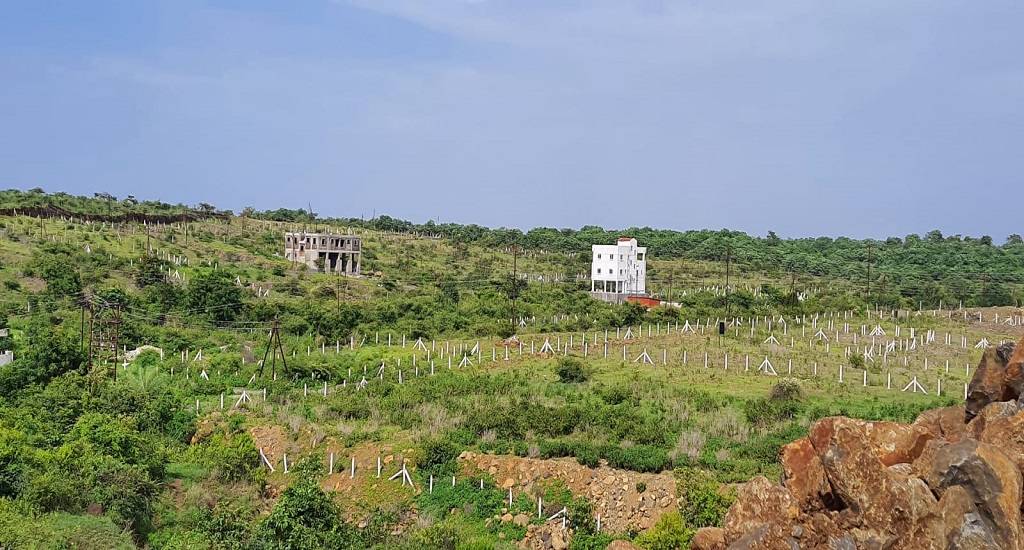Maharashtra: Now You Can Register Even 1 Guntha Land On Purchase, Bombay High Court Rules

Aurangabad, 7th May 2022: The Bombay High Court’s Aurangabad bench has struck down Rule 44(1)(i) of the Maharashtra Registration Rules, 1961, which required a person seeking registration of sale deeds for lands of a specific size to get a No Objection Certificate (NOC) from the appropriate body for land fragmentation.
In light of section 8B of the Maharashtra Prevention of Fragmentation and Consolidation of Holding (Amendment) Act, 2015, a circular issued by the Inspector General of Registration and Controller of Stamps (IGRCS) on July 12, 2021, mandated the enclosure of permission from the concerned authority based on Rule 44(1)(i). The circular prohibited Sub-Registrars from registering any sale or transfer deed unless there was no objection from the appropriate authority.
The asserted Rule was adverse to section 34 of the Registration Act, 1908, and expressly outside the powers provided under section 69 of the Registration Act, 1908. A division bench of Justices RD Dhanuka and SG Mehare ruled on Thursday at the Aurangabad bench.
The bench ruled that, “The rules that can be created cannot go beyond the rule-making authority granted by the Parent statute or supersede any provision for which such authority is not granted. Rule 44 (7)0 does not comply with the stipulations of sections 34 and 35 of the Indian Registration Act and cannot go beyond those provisions.”
The petitioners’ lawyer, Advocate Rameshwar Totla, contended that while section 69 of the Registration Act of 1908 enabled the IGRCS to make rules, the competent authority could not make regulations that were adverse to the requirements of the Indian Registration Act, 1908.
“An Act conferring rule-making authority does not empower the rule-making authority to make a rule that goes beyond the scope of the enabling Act, or is inconsistent or repugnant to it,” he reasoned.
“The IGRCS cannot expand the jurisdiction of the registering authority, which is otherwise restricted and limited to the factum of execution of the document, identity of persons appearing before the registering authorities, and if a person appears through a representative or agent, then as to such person’s right to appear,” Totla further continued.
The petition was not maintainable, according to Government Pleader D R Kale, because the petitioners had an alternate remedy of submitting an appeal under section 71 of the Registration Act, 1908 before the District Collector, who is also the Ex-Officio District Registrar and competent authority.
Kale cited that section 8B of the Maharashtra Prevention of Fragmentation and Consolidation of Holdings Act, 1947, stated that no person was allowed to transfer any parcel of land located in certain areas with areas less than the standard area notified, unless that land parcel was created due to a sub-division or layout approved by the planning authority or the Collector under the Maharashtra Regional Planning Act, 1947.
He claimed that the petitioners couldn’t prove that the properties they wanted to register through a sale deed were due to subdivisions or approved layouts by the planning body or the Collector under the Maharashtra Regional and Town Planning Act, 1966.
According to Rule 44, if a transaction is forbidden by any existing Central or State Government Act, the actual copy of the relevant authorization or No Objection Certificate from the responsible authority under the said Act must be attached.
“The above-mentioned Rule 44(1)(0) is formulated with the intention of consolidating the enactments relating to document registration and to prevent any breach of statutes by the party asking for document registration,” Kale stated.
The bench cited the State of Rajasthan and Ors. Vs. Basant Nahata (2005) 12 SCC 77, where the Supreme Court declared that a section incorporated by Rajasthan Amendment Act 16 of 1976 through subordinate legislation cannot control transactions that fall outside the purview thereof. The Union of India & Ors was also cited by the bench.
In V S Shrinivasan (2012) 7 SCC 683, the Supreme Court stated that a rule becomes ultra vires if it goes beyond the rule-making power provided by the statute or supplants any provision for which power is not conferred.
The bench also noted that the Bombay High Court had interpreted sections 34 and 35 of the Indian Registration Act in the case of M/s. Sundarsons V State of Maharashtra, which was decided on June 26, 2008, and held that the Collector had no power to give directions to the Sub-Registrar to refuse the registration of the document.
“In our opinion, the Sub-Registrar, when registering a document under sections 34 and 35 of the Registration Act, is not an adjudicating authority and has no authority to determine whether the transaction that is the subject of the document lodged for registration is validly executed or not, or whether it is prohibited by any law. If the respondents desired to provide the Sub-Registrar or registering authority such rights, they would have conferred so specifically by amending the Parent Act and through the proper procedures, rather than by making rules or issuing circulars,” the Supreme Court ruled.
Also Read Is it too late to be an IITian / Top Doctor?
Join Punekar News Whatsapp Group, Telegram, Instagram And Twitter For Regular Update about Pune City And Pimpri-Chinchwad






